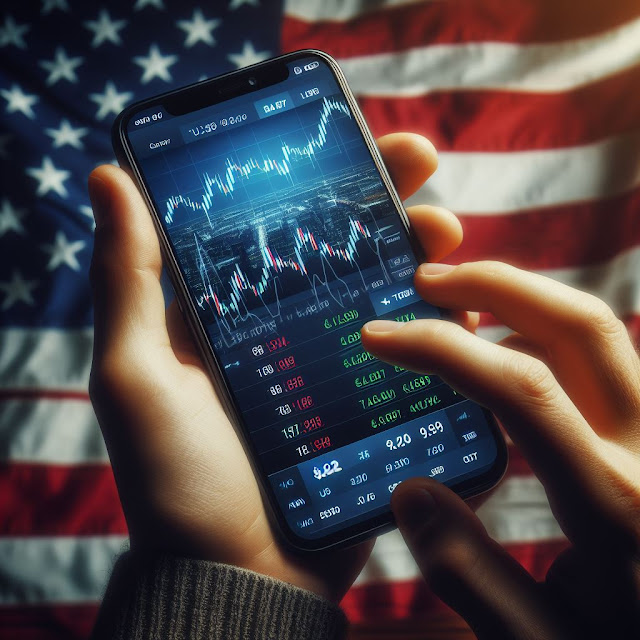When Forex Market Open In USA ?
Trading the Clock
A Comprehensive Guide to Forex Market Opening Hours in the US
In the bustling realm of Forex trading, timing is everything. The Forex market, known for its 24/5 operation, experiences distinct phases influenced by the major trading sessions around the world. For traders in the United States, understanding when the Forex market opens is crucial for seizing opportunities, managing risk, and navigating the dynamics of global currency exchange. In this extensive guide, we will delve into the specifics of when the Forex market opens in the US, exploring the significance of the New York session, the overlapping trading hours, and strategies for making the most of this pivotal time.
Deciphering Forex Trading Sessions
Before we dive into the details of when the Forex market opens in the US, let's establish a foundational understanding of how the market is structured in terms of trading sessions.
- 1. Sydney Session:
- Opens at 22:00 GMT on Sunday.
- Primary focus on the Asia-Pacific region.
- 2. Tokyo Session:
- Opens at 00:00 GMT.
- Overlaps with the Sydney session, increasing liquidity.
- 3. London Session:
- Opens at 08:00 GMT.
- Considered the heart of the Forex market.
- 4. New York Session:
- Opens at 13:00 GMT.
- Overlaps with the London session, creating a period of heightened activity.
When Does the Forex Market Open in the US?
1. New York Session Kickoff:
The Forex market opens in the US with the commencement of the New York session at 13:00 GMT (08:00 AM EST). The New York session is renowned for its significant impact on currency movements, as it represents one of the major financial centers globally.
2. Overlapping Sessions:
One of the most dynamic periods for Forex trading occurs when the New York session overlaps with the London session. This overlap typically takes place from 13:00 to 17:00 GMT. During these hours, the market experiences heightened liquidity, presenting ample opportunities for traders.
3. Extended Trading Hours:
While the New York session officially closes at 22:00 GMT, Forex trading continues through the Asian session. The Asian session sees relatively lower trading volumes, but it is not uncommon for traders in the US to engage in extended trading hours, capitalizing on opportunities arising from events or developments during the Asian session.
The Significance of the New York Session
1. Market Dominance:
The New York session holds a position of dominance in the Forex market, accounting for a significant portion of global trading volumes. This prominence is due to the presence of major financial institutions, hedge funds, and corporations in the United States.
2. Currency Pairs in Focus:
During the New York session, specific currency pairs tend to be in focus. Major pairs involving the US dollar, such as EUR/USD, USD/JPY, GBP/USD, and USD/CHF, experience heightened activity.
3. Economic Releases:
The New York session often witnesses the release of crucial economic data, including employment reports, GDP figures, and manufacturing data. Traders keen on fundamental analysis closely monitor these releases for potential market-moving events.
4. Overlapping with Other Sessions:
The overlap between the New York and London sessions is particularly noteworthy. This period, known as the "golden hours," offers a confluence of trading activity from two major financial hubs, resulting in increased liquidity and volatility.
Strategies for Trading During the New York Session
1. Opening Range Breakout:
Traders may employ the opening range breakout strategy, focusing on the initial price movements during the New York session. Breakouts from the opening range can signal potential trends for the day.
2. News Trading:
Given the release of economic data and news during the New York session, news trading strategies become relevant. Traders can position themselves based on the outcomes of key announcements.
3. Trend Following:
Identifying and following trends is a popular strategy during the New York session. Traders may use technical analysis tools to recognize trends and enter positions in the direction of those trends.
4. Scalping Opportunities:
The increased liquidity during the overlapping sessions can create opportunities for scalping. Traders engaging in short-term trades may find the New York session conducive to their strategies.
Factors Influencing New York Session Dynamics
1. Economic Data Releases:
Key economic indicators, such as Non-Farm Payrolls, GDP reports, and consumer sentiment, can significantly impact the New York session. Traders should be aware of scheduled releases and their potential effects on currency pairs.
2. Central Bank Announcements:
Statements and decisions from the Federal Reserve, the US central bank, can influence the US dollar and, consequently, currency pairs involving the USD. Traders should stay informed about any scheduled central bank announcements.
3. Global Events:
Developments in other parts of the world during the Asian and European sessions may carry over into the New York session. Geopolitical events and market sentiment shifts can influence currency movements.
4. Market Sentiment:
Trader sentiment and positioning can play a crucial role in shaping market dynamics. Monitoring sentiment indicators and market positioning can provide insights into potential price movements.
Conclusion
Mastering the New York Session for Forex Success
As the Forex market opens in the US, the New York session takes center stage, offering traders a prime opportunity to participate in a global financial playground. Understanding when the Forex market opens in the US is more than a matter of timing; it's about tapping into a wealth of possibilities, strategies, and potential gains.
For traders navigating the New York session, the key lies in a combination of awareness, strategy, and adaptability. By embracing the nuances of this crucial trading window, traders can position themselves for success, leveraging the opportunities that arise during the dynamic and influential hours of the New York session in the ever-evolving landscape of Forex trading.









